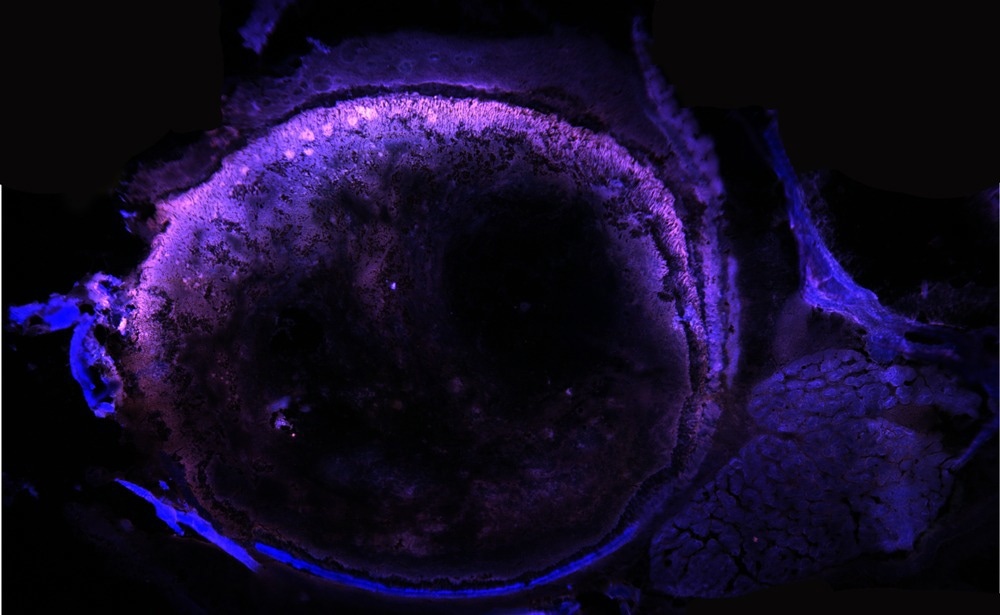The journal Scientific Reports has published a proof-of-principle study that presents a device that can transform a tablet or smartphone into a fluorescence microscope for no more than $50.

Image Credit: Florian Hipper/Shutterstock.com
The authors recommend that the device, which is called a glowscope, can be employed to image tissue, cells, and organisms under low magnification in science outreach settings, schools, and certain research labs.
Fluorescence microscopes are employed to analyze specimens labeled with fluorescent stains or express fluorescent proteins. However, since such microscopes generally cost a minimum of several thousand US dollars, their application is usually limited to well-funded research labs.
Devised by Jacob Hines and coworkers, the glowscope is built of a plywood and plexiglass frame, an LED torch, a clip-on camera lens, and theatre stage lighting filters. The frame is used by placing a tablet or smartphone over a specimen, and the lens is clipped onto the tablet or phone camera to facilitate magnification.
The LED torch illuminates the specimen, and a lighting filter is positioned over the lens to filter out unnecessary wavelengths of light and enable visualization of fluorescent light emitted by the specimen.
The authors illustrated the capacities of the glowscope by utilizing it to image live zebrafish embryos—which range from 2–3 mm long—expressing fluorescent proteins in either the cardiac tissue, spinal cord, or hindbrain. They discovered that the clip-on lens offered around five-fold magnification and was able to image red and green fluorescent tissues with a maximum of 10 μm resolution—adequate to observe individual pigment cells. The authors employed the glowscope to measure the embryos’ heart rates and the movements of individual heart chambers after improving the clarity of videos recorded with free software.
Since the materials for a glowscope cost around US $30 to $50, the authors suggest that they could be utilized by school students to study behavior, anatomy, development, physiology, and genetic inheritance in tiny organisms expressing fluorescent proteins. Many smartphones and glowscopes could also be utilized at the same time to attain video data in research laboratories that do not have access to multiple fluorescence microscopes, the authors stated.
Journal Reference:
Schaefer, M. A. et al. (2023) A low-cost smartphone fluorescence microscope for research, life science education, and STEM outreach. Scientific Reports. dx.doi.org/10.1038/s41598-023-29182-y.